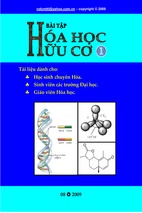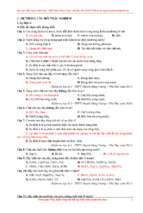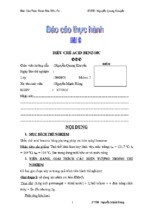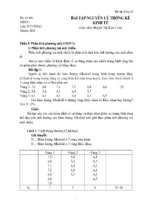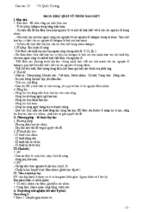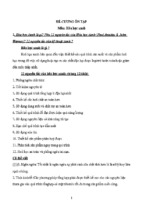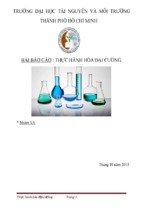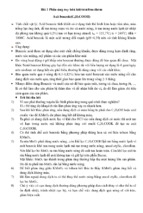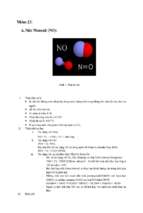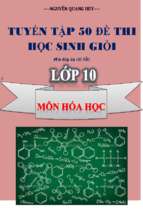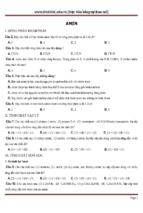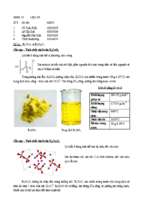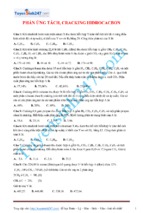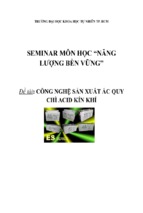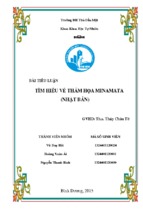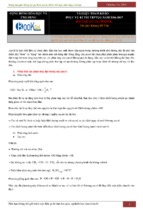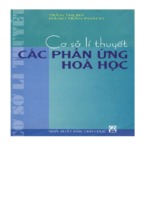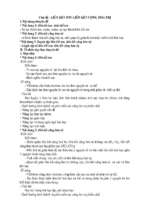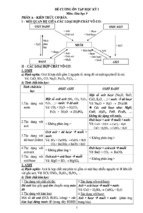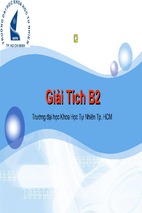INSTRUMENT ENGINEERS' HANDBOOK
Fourth Edition
Process
Measurement
and Analysis
VOLUME I
Bela G. Liptak
EDITOR-IN-CHIEF
ISA-The Instrumentation, Systems, and Automation Society f isn
CRC PRESS
Boca Raton London New York Washington, D.C.
This reference text is published in cooperation with ISA Press, the publishing division of ISA—Instrumentation, Systems, and Automation Society.
ISA is an international, nonproÞt, technical organization that fosters advancement in the theory, design, manufacture, and use of sensors, instruments,
computers, and systems for measurement and control in a wide variety of applications. For more information, visit www.isa.org or call (919) 5498411.
Library of Congress Cataloging-in-Publication Data
Instrument engineers’ handbook / Béla G. Lipták, editor-in-chief.
p. cm.
Rev. ed. of: Instrument engineers’ handbook. Process measurement and analysis. c1995
and Instrument engineers’ handbook. Process control. c1995.
Includes bibliographical references and index.
Contents: v. 1. Process measurement and analysis.
ISBN 0-8493-1083-0 (v. 1)
1. Process control—Handbooks, manuals, etc. 2. Measuring instruments—Handbooks,
manuals, etc. I. Lipták, Béla G. II. Instrument engineers’ handbook.
Process measurement and analysis.
TS156.8 .I56 2003
629.8—dc21
2003048453
his book contains information obtained from authentic and highly regarded sources. Reprinted material is quoted with permission, and sources are
indicated. A wide variety of references are listed. Reasonable efforts have been made to publish reliable data and information, but the author and the
publisher cannot assume responsibility for the validity of all materials or for the consequences of their use.
Neither this book nor any part may be reproduced or transmitted in any form or by any means, electronic or mechanical, including photocopying,
microÞlming, and recording, or by any information storage or retrieval system, without prior permission in writing from the publisher.
All rights reserved. Authorization to photocopy items for internal or personal use, or the personal or internal use of speciÞc clients, may be granted
by CRC Press LLC, provided that $1.50 per page photocopied is paid directly to Copyright Clearance Center, 222 Rosewood Drive, Danvers, MA
01923 USA. The fee code for users of the Transactional Reporting Service is ISBN 0-8493-1083-0 (v. 1)/03/$0.00+$1.50. The fee is subject to
change without notice. For organizations that have been granted a photocopy license by the CCC, a separate system of payment has been arranged.
The consent of CRC Press LLC does not extend to copying for general distribution, for promotion, for creating new works, or for resale. SpeciÞc
permission must be obtained in writing from CRC Press LLC for such copying.
Direct all inquiries to CRC Press LLC, 2000 N.W. Corporate Blvd., Boca Raton, Florida 33431.
Trademark Notice: Product or corporate names may be trademarks or registered trademarks, and are used only for identiÞcation and explanation,
without intent to infringe.
Visit the CRC Press Web site at www.crcpress.com
© 2003 by Béla Lipták
No claim to original U.S. Government works
International Standard Book Number 0-8493-1083-0 (v. 1)
Library of Congress Card Number 2003048453
Printed in the United States of America 1 2 3 4 5 6 7 8 9 0
Printed on acid-free paper
© 2003 by Béla Lipták
Dedicated to you, my colleagues, the instrument and process control engineers.
I hope that by applying the knowledge found on these pages you will make
our industries more efficient, safer, and cleaner, and thereby will not only
contribute to a happier future for all mankind but will also advance the
recognition and respectability of our profession.
© 2003 by Béla Lipták
CONTENTS
Contributors xiii
Introduction xxi
Definitions xxvii
Abbreviations, Nomenclature, Acronyms, and Symbols
Societies and Organizations li
1
General Considerations
1.1
1.2
1.3
1.4
1.5
1.6
1.7
1.8
1.9
1.10
1.11
1.12
2
1
Flowsheet Symbols and P&I Diagrams 4
Functional Diagrams and Function Symbols 31
Instrument Terminology and Performance 46
System Accuracy 78
Uncertainty Calculations 86
Configuring Intelligent Devices 93
Instrument Installation 100
Instrument Calibration 108
Response Time and Drift Testing 114
Redundant and Voting Systems 126
Instrument Evaluation 136
Binary Logic Diagrams 142
Flow Measurement
2.1
2.2
2.3
2.4
2.5
2.6
2.7
2.8
2.9
2.10
2.11
2.12
2.13
2.14
2.15
2.16
2.17
xxxix
151
Application and Selection 156
Anemometers 173
BTU Flowmeters for Heat Exchangers 177
BTU Flowmeters for Gaseous Fuels 180
Cross-Correlation Flow Metering 183
Elbow Taps 189
Flow Switches 193
Jet Deflection Flow Detectors 198
Laminar Flowmeters 201
Magnetic Flowmeters 208
Mass Flowmeters, Coriolis 225
Mass Flowmeters—Miscellaneous 237
Mass Flowmeters—Thermal 244
Metering Pumps 251
Orifices 259
Pitot Tubes and Area Averaging Units 277
Polyphase (Oil/Water/Gas) Flowmeters 287
vii
© 2003 by Béla Lipták
viii
Contents
2.18
2.19
2.20
2.21
2.22
2.23
2.24
2.25
2.26
2.27
2.28
2.29
2.30
2.31
3
Level Measurement 401
3.1
3.2
3.3
3.4
3.5
3.6
3.7
3.8
3.9
3.10
3.11
3.12
3.13
3.14
3.15
3.16
3.17
3.18
3.19
3.20
3.21
4
Application and Selection 405
Bubblers 421
Capacitance and Radio Frequency (RF) Admittance 430
Conductivity and Field-Effect Level Switches 445
Diaphragm Level Detectors 449
Differential Pressure Level Detectors 454
Displacer Level Devices 465
Float Level Devices 474
Laser Level Sensors 482
Level Gauges, Including Magnetic 486
Microwave Level Switches 497
Optical Level Devices 500
Radar, Noncontacting Level Sensors 504
Radar, Contact Level Sensors (TDR, GWR, PDS) 508
Radiation Level Sensors 514
Resistance Tapes 526
Rotating Paddle Switches 530
Tank Gauges Including Float-Type Tape Gauges 533
Thermal Level Sensors 544
Ultrasonic Level Detectors 548
Vibrating Level Switches 556
Temperature Measurement
4.1
4.2
4.3
4.4
4.5
4.6
4.7
4.8
4.9
4.10
4.11
4.12
4.13
© 2003 by Béla Lipták
Positive-Displacement Gas Flowmeters 294
Positive-Displacement Liquid Meters and Provers 299
Purge Flow Regulators 307
Segmental Wedge Flowmeter 310
Sight Flow Indicators 313
Solids Flowmeters and Feeders 318
Target Meters 335
Turbine and Other Rotary Element Flowmeters 337
Ultrasonic Flowmeters 357
Variable-Area, Gap, and Vane Flowmeters 362
V-Cone Flowmeter 371
Venturi Tubes, Flow Tubes, and Flow Nozzles 374
Vortex and Fluidic Flowmeters 384
Weirs and Flumes 395
561
Application and Selection 565
Bimetallic Thermometers 590
Calibrators and Simulators 594
Cones, Crayons, Labels, Paints, and Pellets 599
Fiber-Optic Thermometers 604
Filled-Bulb and Glass-Stem Thermometers 610
Integrated Circuitry Transistors and Diodes 620
Miscellaneous and Discontinued Sensors 623
Radiation and Infrared Pyrometers 630
Resistance Temperature Detectors 645
Temperature Switches and Thermostats 657
Thermistors 666
Thermocouples 673
Contents
4.14
4.15
5
Pressure Measurement
5.1
5.2
5.3
5.4
5.5
5.6
5.7
5.8
5.9
5.10
5.11
5.12
5.13
5.14
6
705
709
Selection and Application 712
Accessories (Seals, Snubbers, Calibrators, Manifolds)
Bellows-Type Pressure Sensors 726
Bourdon and Helical Pressure Sensors 731
Diaphragm or Capsule-Type Sensors 736
Differential Pressure Instruments 743
Electronic Pressure Sensors 751
High-Pressure Sensors 762
Manometers 766
Multiple Pressure Scanners 774
Pressure Gauges 779
Pressure Repeaters 785
Pressure and Differential Pressure Switches 790
Vacuum Sensors 795
Density Measurement
6.1
6.2
6.3
6.4
6.5
6.6
6.7
6.8
6.9
6.10
7
Thermowells 697
Ultrasonic and Sonic Thermometers
807
Density: Applications and Selection 809
Displacement- and Float-Type Densitometers 816
Hydrometers 823
Hydrostatic Densitometers 826
Oscillating Coriolis Densitometer (Gas, Liquid, and Slurry Services)
Radiation Densitometers 836
Ultrasonic Sludge and Slurry Densitometers 841
Liquid/Slurry/Gas Density—Vibrating Densitometers 844
Weight-Based and Miscellaneous Densitometers 852
Gas Densitometers 857
Safety and Miscellaneous Sensors
7.1
7.2
7.3
7.4
7.5
7.6
7.7
7.8
7.9
7.10
7.11
7.12
7.13
7.14
7.15
7.16
7.17
7.18
7.19
7.20
7.21
7.22
© 2003 by Béla Lipták
718
865
Boroscopes 872
Electrical and Intrinsic Safety 875
Electrical Meters and Sensors 889
Energy Management Devices (Peak Load Shedding) 903
Excess Flow and Regular Check Valves 908
Explosion Suppression and Deluge Systems 912
Flame Arresters, Conservation Vents, and Emergency Vents
Flame, Fire, and Smoke Detectors 928
Leak Detectors 936
Linear and Angular Position Detection 944
Machine Vision Technology 951
Metal Detectors 955
Noise Sensors 958
Proximity Sensors and Limit Switches 964
Relief Valves—Determination of Required Capacity 973
Relief Valves—Sizing, Specification, and Installation 991
Rupture Discs 1018
Soft Sensors 1030
Tachometers and Angular Speed Detectors 1038
Thickness and Dimension Measurement 1045
Torque and Force Transducers 1051
Vibration, Shock, and Acceleration 1061
920
831
ix
x
Contents
7.23
7.24
7.25
8
Analytical Instrumentation
8.1
8.2
8.3
8.4
8.5
8.6
8.7
8.8
8.9
8.10
8.11
8.12
8.13
8.14
8.15
8.16
8.17
8.18
8.19
8.20
8.21
8.22
8.23
8.24
8.25
8.26
8.27
8.28
8.29
8.30
8.31
8.32
8.33
8.34
8.35
8.36
8.37
8.38
8.39
8.40
8.41
8.42
8.43
8.44
8.45
8.46
8.47
8.48
8.49
© 2003 by Béla Lipták
Weather Stations 1077
Weighing Systems: General Considerations
Weight Sensors 1101
1084
1127
Analyzer Application and Selection 1144
Analyzer Sampling: Process Samples 1170
Analyzer Sampling: Stack Particulates 1189
Analyzers Operating on Electrochemical Principles 1198
Air Quality Monitoring 1207
Biometers 1222
Biological Oxygen Demand, Chemical Oxygen Demand,
and Total Oxygen Demand 1224
Calorimeters 1235
Carbon Dioxide 1242
Carbon Monoxide 1245
Chlorine 1251
Chromatographs: Gas 1258
Chromatographs: Liquid 1289
Coal Analyzers 1295
Colorimeters 1299
Combustibles 1304
Conductivity Analyzers 1316
Consistency Analyzers 1323
Corrosion Monitoring 1329
Differential Vapor Pressure Sensor 1335
Dioxin Analysis 1339
Elemental Monitors 1342
Fiber-Optic Probes 1347
Fluoride Analyzers 1353
Hydrocarbon Analyzers 1358
Hydrogen Sulfide 1364
Infrared and Near-Infrared Analyzers 1369
Ion-Selective Electrodes 1388
Mass Spectrometers 1399
Mercury in Ambient Air 1407
Mercury in Water 1413
Moisture in Air: Humidity and Dew Point 1420
Moisture in Gases and Liquids 1434
Moisture in Solids 1450
Molecular Weight 1457
Nitrate, Ammonia, and Total Nitrogen 1469
Nitrogen Oxide Analyzers 1474
Odor Detection 1480
Oil in or on Water 1486
Open Path Spectrophotometry (UV, IR, FT-IR) 1493
Oxidation-Reduction Potential (ORP) 1506
Oxygen in Gases 1514
Oxygen in Liquids (Dissolved Oxygen) 1526
Ozone in Gas 1536
Ozone in Water 1540
Particulates, Opacity, Dust, and Smoke 1544
Particle Size and Distribution Monitors 1559
pH Measurement 1565
Phosphorus Analyzer 1585
Contents
8.50
8.51
8.52
8.53
8.54
8.55
8.56
8.57
8.58
8.59
8.60
8.61
8.62
8.63
8.64
8.65
8.66
Physical Properties Analyzers—ASTM Methods 1589
Raman Analyzers 1606
Refractometers 1620
Rheometers 1628
Streaming Current or Particle Charge Analyzer 1637
Sulfur-in-Oil Analyzers 1641
Sulfur Oxide Analyzers 1646
Thermal Conductivity Detectors 1653
Total Carbon Analyzers 1658
Toxic Gas Monitoring 1666
Turbidity, Sludge, and Suspended Solids 1680
Ultraviolet and Visible Analyzers 1687
Viscometers—Application and Selection 1700
Viscometers—Laboratory 1708
Viscometers—Industrial 1723
Water Quality Monitoring 1744
Wet Chemistry and Autotitrator Analyzers 1755
Appendix
A.1
A.2
A.3
A.4
A.5
A.6
A.7
A.8
© 2003 by Béla Lipták
1765
International System of Units 1767
Engineering Conversion Factors 1777
Chemical Resistance of Materials 1799
Composition of Metallic and Other Materials
Steam and Water Tables 1809
Friction Loss in Pipes 1817
Tank Volumes 1821
Directory of “Lost” Companies 1824
1806
xi
CONTRIBUTORS
The names of the authors of each edition are given at the beginning of each section. Here, all the contributors of all editions
of this volume are listed in alphabetical order, showing their academic degrees, titles, and positions they held at the time
of making their contributions. The authors who have participated in the preparation in this fourth edition of the Instrument
Engineers’ Handbook (IEH) are noted by an asterisk (*) in front of their names, but, because they built on the work of the
authors of the previous editions, all authors are listed.
*BUD ADLER
BSEE; Life Member ISA; Director, Business Development, Moore Industries-International, Inc.
ROSS C. AHLSTROM, JR.
BSCh and Math, Executive Vice President, Mentech Inc.
ARTHUR ALSTON
BS, PE, Senior Research Engineer, Chevron Research Co.
MARTIN ANKLIN
PhD, Research Scientist, Endress + Hauser, Switzerland
*RAYMOND ANNINO
PhD, retired Professor and Researcher, formerly with The Foxboro Co.
CATHY APPLE
BSChE, Project Engineer, Micro Motion Inc.
*JAMES B. ARANT
BSChE, PE retired Senior Consultant, formerly with E.I. du Pont de Nemours Co.
*TIBOR BAAN
BME, CEO of Aalborg Instrument and Controls Inc.
ALLAN T. BACON, JR.
BACh, Staff Engineer, Environmental Technologies Group
*STEVEN BAIN
BscEE, PEng, Canada
WENDALL M. BARROWS
Senior Applications Coordinator, Union Carbide Corp.
JAN BARTH
EE, MS, Manager, Industrial Instrument Users Association, The Netherlands
*ERNEST H. BAUGHMAN
PhD, Assistant Professor, University of La Verne, California
JONAS BERGE
Engineer, Smar, Singapore
A. C. BLAKE
EE, Manager, Industrial Instrument Div., Cambridge Instrument Co.
CHRISTOPHER P. BLAKELEY
BSChE, Marketing Manager, Water Treatment, Honeywell Inc.
xiii
© 2003 by Béla Lipták
xiv
Contributors
*L JOSEPH BOLLYKY
PhD, PE, President, Bollyky Associates
R. V. BOYD, JR.
BSEE, MSEE, PE, Engineering Supervisor, Saudi Aramco
*WALT BOYES
Principal, Marketing Practice Consultants
AUGUST BRODGESELL
BSEE, President, CRB Systems Inc.
JAMES E. BROWN
BSME, PE, Manager of Engineering, Union Carbide Corp.
THOMAS M. CARDIS
MSCh, Laboratory Manager, ABB Process Analytics
*BOYCE CARSELLA, JR.
BA, Senior Product Manager, Magnetrol International
THOMAS J. CLAGGETT
BSEE, Application Specialist, Honeywell, Inc.
WILSON A. CLAYTON
BSChE, MSME, Chief Engineer, Hy-Cal Engineering
GERALD L. COMBS
PhDCh, Research Chemist, Applied Automation/Hartmann & Braun
VINCENT B. CORTINA
BSChE, MSIM, Business Manager, EG&G Co.
GILES M. CRABTREE
BSEE, PE, Principal Engineer, GIMACA Engineering
H. L. DANEMAN
BChE, PE, Principal, LabPlan
JOHN L. DANIEWICZ
BSEE, MA, Product Manager, TN Technologies Inc.
*RONALD H. DIECK
BS, MS, FISA, President, Ron Dieck Associates, Inc.
LOUIS D. DINAPOLI
BSEE, MSEE, Director, Flowmeter Marketing and Technology, BIF Products of Leeds
& Northrup Co.
WOLFGANG DRAHM
PhD, Research Scientist, Endress + Hauser, Germany
*WATSON P. DURDEN
AS, Senior Engineer, Westin Engineering
*MICHAEL PAUL DZIEWATKOSKI
PhD, Applications Manager, Metter-Toledo Ingold
*SUZANNE MARIE EDVI
IIT, Senior Instrument Specialist, Bantrel Inc., Canada
ALBERT D. EHRENFRIED
MS in Instrumentation, President, Metritape Inc.
*HALIT EREN
ME, MBA, PhD, Senior Lecturer, Cutin University, Australia
*GEORG F. ERK
BSME, MSChE, PE, Consultant
JOSEF FEHRENBACH
Dipl. Ing., VEGA Grieshaber GmbH & Co., Germany
KENNETH S. FLETCHER
PhD, Technical Group Leader, Analytical Measurements, The Foxboro Co.
ALBERT P. FOUNDOS
BSChE, MBA, President, Fluid Data Inc.
WALTER F. GERDES
BSEE, PE, Technical Specialist, The Dow Chemical Co.
© 2003 by Béla Lipták
Contributors
xv
*PEDRO M. B. SILVA GIRÃO
PhD, Professor, Instituto Superior Técnico, Lisbon, Portugal
*IAN H. GIBSON
BSc, Dip. App. Chem., Dip. Chem. Eng, Dip. Inst. Tech., Principal Technical Specialist, Process Control Systems, Fluor, Australia
*RICHARD A. GILBERT
BA, MS, PhD, Professor of Chemical Engineering, University of Florida
ANTHONY C. GILBY
PhD, Research Coordinator, The Foxboro Co.
PAUL M. GLATTSTEIN
BSEE, Senior Electrical Engineer, Crawford & Russell Inc.
JOHN D. GOODRICH, JR.
BSME, Engineering Supervisor, Bechtel Corp.
ROBERT J. GORDON
PhD, Environmental Division Manager, Global Geochemistry Corp.
DAVID M. GRAY
BSChE, Senior Application Specialist, Leeds & Northrup, a Unit of General Signal
*JAMES R. GRAY
BSCh, MBA, Applications Manager, Rosemount Analytical
BHISHAM P. GUPTA
BSME, MSME, PhD, PE, Specialist Supervisor, Saudi Aramco
JOHN T. HALL
BS, Senior Technical Editor, Instrument & Control Systems
CHARLES E. HAMILTON
BSChE, Senior Environmental Specialist, The Dow Chemical Co.
JOHN N. HARMAN III
BSCh, MSCh, PE, Senior Project Engineer, Beckman Instruments
*HASHEM M. HASHEMIAN
MSNE, President, Analysis and Measurement Services Corp.
ROBERT A. HERRICK
BSChE, PE, Consulting Engineer
HEROLD I. HERTANU
MSEE, PE, Senior Vice President, Advanced Engineering Concepts Inc.
CONRAD H. HOEPPNER
BSEE, MSEE, Consultant, Simmons Precision Products Inc.
MICHAEL F. HORDESKI
BSEE, MSEE, PE, Control System Consultant, Siltran Digital
JOEL O. HOUGEN
PhDChE, PE, Consultant, Professor Emeritus, University of Texas
WALTER D. HOULE
BSEE, President, Automation Management International
WILFRED H. HOWE
BSEE, MBA, PE, Chief Engineer, The Foxboro Co.
DAVID L. HOYLE
BSChE, System Design Engineer, The Foxboro Co.
JAY S. JACOBSON
PhD, Plant Physiologist, Boyce Thomson Institute for Plant Research
RAJSHREE R. JAIN
BSChE, Applications Engineer, Capital Controls Co.
ROBERT F. JAKUBIK
BSChE, Manager, Process Control Applications, Digital Applications Inc.
*JAMES E. JAMISON
BSc-ChE, PE, Technical Director, Instrumentation and Process Control Systems,
VECO (Canada) Ltd.
© 2003 by Béla Lipták
xvi
Contributors
*JOHN M. JARVIS
PhD, Manager of Gas Products Engineering, Detector Electronics
HERBERT H. JONES
BS, Principal Applications Engineer, Beckman Instruments Inc.
RICHARD K. KAMINSKI
BA, Senior Instrument Designer, Dravo Engineers and Constructors
DAVID S. KAYSER
BSEE, Senior Instrument Engineer, Texas City Refining Inc.
THOMAS J. KEHOE
BSChE, PE, Manager, Technical Services, Beckman Instruments Inc.
TAMÁS KEMÉNY
ME, EE, PhD, Secretary General, IMEKO International Measurement Confederation,
Hungary
CHANG H. KIM
BSChE, Manager, Technical Services, ARCO Chemical Co.
JOHN G. KOCAK, JR.
BA, Consultant
JOHN G. KOPP
BSME, PE, Senior Product Marketing Manager, Fischer & Porter Co.
JOSEF KOZÁK
PhD, Aeronautical Research and Test Institute, Czech Republic
*CULLEN G. LANGFORD
BSME, PE, ISA Fellow, Consultant, Cullen G. Langford Inc.
GEORGE R. LEAVITT
BSME, PE, Consultant
*MARIA T. LEE-ALVAREZ
PhD, Physical Science Teacher, Cincinnati Public School District
*DAVID LEWKO
Senior Analyzer Specialist, Bantrel Co.
TRUMAN S. LIGHT
BSCh, MSCh, PhDCh, Consultant
*BÉLA G. LIPTÁK
MME, PE, ISA Fellow, Consultant, inducted into Control Process Automation Hall
of Fame in 2001
DAVID H. F. LIU
BSc, MS, PhD, Principal Scientist, J. T. Baker Inc.
*ANDREW J. LIVINGSTON
BS, MBA, Nuclear Product Manager, Ohmart Vega
HARRY E. LOCKERY
BSEE, MSEE, PE, President, Hottinger-Baldwin Measurements Inc.
DAVID J. LOMAS
Marketing Support Executive, Kent Process Control Ltd.
ORVAL P. LOVETT, JR.
BSCE, Consulting Engineer, Instruments and Control Systems, I. E. du Pont de
Nemours Co.
JIRÍ LUKAS
MSC, Scientific Worker, Aeronautical Research and Test Institute of Czech Republic
*JULES J. MAGDA
PhD, ChE, Associate Professor, Dept. of Chemical and Fuels Engineering, University
of Utah
DAVID C. MAIR
BCE, PE, Manager, Sales Services, Wallace & Tiernan Div. of Pennwalt Corp.
*RAMASAMY MANOHARAN
PhD, Manager of Sensor Technology, Rosemount Analytical Inc.
© 2003 by Béla Lipták
Contributors
xvii
FRED D. MARTIN
BS, Analyzer Consultant, Fluid Data, Amscor
THOMAS A. MAYER
BSE, MSE, PE, Senior Development/Research Engineer, PPG Industries
GERALD F. McGOWAN
BSEE, MSEE, Vice President of Engineering, Lear Siegler Inc.
GREGORY K. McMILLAN
BSEPhys, MSEE, Fellow, Monsanto Chemical Co.
*DEAN MILLER
BSME, MBA, Manager of Pressure Relief and Tooling Engineering, Fike Corp.
HUGH A. MILLS
ME, President, Macran Products
CHARLES F. MOORE
BSChE, MSChE, PhDChE, Professor of Chemical Engineering, University of
Tennessee
*LEONARD W. MOORE
PE, President and CEO of Moore Industries International Inc.
*GERHARD MURER
Dipl. Eng., Manager of Anton Paar GmbH, Austria
THOMAS J. MYRON, JR.
BSChE, Senior Systems Design Engineer, The Foxboro Co.
*JAMES A. NAY
PE, BSME, Consultant, Retired
S. NISHI
DSc. Research Scientist, National Chemical Laboratory for Industry, Japan
ROBERT NUSSBAUM
BSEE, Senior Instrument Engineer, Crawford & Russell Inc.
*DAVID S. NYCE
BSEE, MBA, Director of Technology at MTS Systems Corp.
RICHARD T. OLIVER
BSChE, MSChE, PhDChE, Senior Design Engineer, The Foxboro Co.
WILLIAM H. PARTH
BS, MS, Senior Instrument Specialist, The Dow Chemical Co.
*SIMON J. PATE
B. Eng., Director of Projects & Systems, Detector Electronics Corp.
*ALMONT V. PAWLOWSKI
BSEE, CSST, PE, Research Associate at Louisiana State University
KENNETH A. PERROTTA
BSCh, Vice President of Technology, Balston Inc.
KURT O. PLACHE
BSChE, PE, Vice-President Marketing, Micro-Motion Inc.
GEORGE PLATT
BSChE, PE, Staff Engineer, Bechtel Power Corp.
DANIEL E. PODKULSKI
BSChE, Senior Instrument Engineer, Chevron Research & Technology
MICHAL PTÁCNÍK
PhD, Aeronautical Research and Test Institute, Czech Republic
DIETER RALL
BSME, MSME, PE, General Manager, Trans-Met Engineering Inc.
M. RAZAQ
PhD, Senior Scientist, Teledyne Analytical Instrument Co.
*MORTON W. REED
PE, PhD, Consultant
JAMES B. RISHEL
BSME, President, Corporate Equipment
© 2003 by Béla Lipták
xviii
Contributors
HOWARD C. ROBERTS
BAEE, PE, Consultant
*JACK C. RODGERS
PE, Vice President of Nuclear Business at Ohmart/VEGA
*JOHN B. ROEDE
ME, Senior Application Consultant, AMETEK-Drexelbrook
*ALBERTO ROHR
EE, Dr. Eng., Consultant, Vedano al Lambro (MI), Italy
LEWIS B. ROOF
BS, MS, Senior Measurement Engineer, Applied Automation Inc.
GREGORY J. RORECH
BSChE, PE, Principal Engineer, Geraghty & Miller Inc.
STEPHAN RUDBÄCH
MSc, President, Matematica AB, Sweden
*ROBERT S. SALTZMAN
BS, Eng. Phys., Principal of Bob Saltzman Associates
*GARY C. SANDERS
BSEE, MT, FICMT, Director of Engineering Tyco Valves & Controls — Penberthy
ERIC J. SCHAFFER
BSEE, MSEE, Project Engineer, MST Systems Corp.
*NARESH K. SETHI
BS, PhD, Technical Team Leader, BP South, Houston, Texas
*ROBERT E. SHERMAN
BSCh, MSCh, MSBA
DONALD J. SIBBETT
PhD, Vice President, Geomet Inc.
ROBERT SIEV
BSChE, MBA, CE, Engineering Specialist, Bechtel Corp.
MIKHAIL SKLIAR
PhD ChE, Associate Professor, Dept. of Chemical and Fuels Engineering, University
of Utah
*KENNETH C. SLONEKER
BSME, V.P., Laboratory Director, Electronic Development Laboratories Inc.
RALPH G. SMITH
BS, MS, PhD, Professor, University of Michigan
*ROBERT J. SMITH II
BSEET, Plant Engineer at Rock-Tenn Co.
JOAN B. STODDARD
PhD, President, Stoddard Productivity Systems Inc.
RICHARD STRAUSS
BSChE, MSChE, Consultant
EUGENE L. SZONNTAGH
MSChE, PhD, PE, Consultant
*JAMES F. TATERA
BS, MBA, Senior Process Analysis Consultant, Tatera Associates Inc.
EDWARD TELLER
PhD, Professor-at-Large, University of California
AMOS TURK
PhD, Professor of Chemistry, City University of New York
*ALAN H. ULLMAN
BS (Chemistry), PhD, Senior Scientist at The Procter & Gamble Co.
*IAN VERHAPPEN
BscEnv, BScCh, PE, Engineering Associate at Syncrude Canada Ltd.
MICHAEL VUJICIC
PE, Director, Industrial Products, Optech Inc.
© 2003 by Béla Lipták
Contributors
xix
WILLIAM H. WAGNER
BSChE, PE, Staff Engineer at Union Carbide Corp.
*MICHAEL H. WALLER B
ME, SM, ME, Professor at Miami University
WILLEM M. WALRAVEN
ME, M&CE, Head of Evaluation Department Netherlands Organization for Applied
Research
NORMAN S. WANER
BSME, MSME, ME, PE, Manager of Training and Development, Bechtel Corp.
JOHN V. WELCH
BSME, MBA, Market Specialist at MKS Instruments Inc.
ALAN L. WERTHEIMER
PhD, Principal Scientist, Leeds & Northrup Co.
GEORGE P. WHITTLE
BSChE, MSChE, PhDChE, PE, Associate Professor, University of Alabama
THEODORE J. WILLIAMS
BS, MSChE, MSEE, PhD, PE, Professor of Engineering, Director of Purdue Laboratory for Applied Industrial Control
ROBERT W. WORRALL
BA, PE, Principal Instrument Engineer, Catalytic Inc.
IRVING G. YOUNG
BS, MS, PhD, Chemist, Advanced Technology Staff, Honeywell Inc.
*JESSE L. YODER
PhD, President, Flow Research
© 2003 by Béla Lipták
INTRODUCTION
Ours is a very young profession: when the first edition of the
Instrument Engineers’ Handbook (IEH) came out, Marks’
Mechanical Engineers’ Handbook was in its fifth edition, and
Perry’s Chemical Engineers’ Handbook was in its sixth!
Now, as we are starting to work on the fourth edition of the
IEH, we are already in a new millenium. But while our
profession is young, we are also unique and special.
After all, no other engineering profession can claim what
we can! No other engineering profession can offer to increase
the GDP by $50 billion without building a single new plant,
and to do that while increasing safety and reducing pollution.
We can do that! We can achieve that goal solely through the
optimization of our existing industries. We can increase productivity without using a single pound of additional raw
material, without needing a single additional BTU.
THIS FOURTH EDITION
During the nearly four decades of its existence, the IEH has
become the most widely used reference source of the instrumentation and control (I&C) engineering profession. During
this same period, the tools of our I&C profession have
changed as control systems were transformed from the early
mechanical and pneumatic ones to today’s electronic and
digital implementations.
During this period, even the name of our profession has
changed. Today, some call it automation, while others refer
to it by a variety of other names, including instrumentation,
process control, I&C, and computer automation. Yet, while
we have not been able to agree even on the name of our
profession, our experience and our knowledge of control
principles has penetrated all the fields of modern science
and technology. I hope that the three volumes of the IEH
have played a major role in spreading this knowledge and
understanding.
In 1968, this handbook started out as a three-volume reference set, and, in that respect, no change has occurred. The
first volume deals with measurement, the second with control, and the third with digital networks and software systems.
CONTENTS OF THE IEH VOLUMES
In this, the first volume, a chapter is devoted to each major
measured variable, and a subchapter (section) is devoted to
each different method of making that measurement. Some
measurements are relatively simple as, for example, the
detection of level; therefore, that chapter has only 21 sections.
Others, such as analysis, are more varied, and that chapter
has 66 sections.
The individual sections (subchapters) begin with a flowsheet symbol and a feature summary. This summary provides
quick access to specific information on the available sizes,
costs, suppliers, ranges, and inaccuracies of the devices covered in that section.
This fourth edition updates the information content of the
previously published sections, incorporates the new developments of the last decade by the addition of new sections, and
broadens the horizons of the work from an American to a
global perspective.
In this first volume, Process Measurement and Analysis,
the emphasis is on measurement hardware, including the
detection of flow, level, temperature, pressure, density, viscosity, weight, composition, and safety sensors.
The second volume of this set, Process Control, covers
control hardware, including transmitters, controllers, control
valves, and displays, and it provides in-depth coverage to the
theory of control and explains how the unit processes of
pumping, distillation, chemical reaction, heat transfer, and
many others are controlled.
The third volume is devoted to Process Software and
Digital Networks. In combination, the three volumes cover
all the topics used by process control or instrument engineers.
READERS OF THE IEH
Experienced process control engineers are likely to use this
reference set either to obtain quick access to specific information or to guide them in making selections. Less experienced engineers and students of instrument engineering are
xxi
© 2003 by Béla Lipták
xxii
Introduction
likely to use this reference work as a textbook. A student
might use it to learn about the tools of our profession.
To fulfill the expectations of both the experienced and the
beginning engineer, the handbook has been structured to be
flexible. On one hand, it contains all the basic information
that a student needs, but it also covers the most recent
advances and provides quick and easy access to both types
of information. Quick access to specific topics and information is provided both by the feature summary at the beginning
of each section and by an extensive index at the end of each
volume.
BIRD’S EYE VIEWS: ORIENTATION TABLES
Another goal of this reference set is to assist the reader in
selecting the best sensors for particular applications. To
achieve this goal, each chapter begins with a section that
provides an application- and selection-oriented overview
along with an orientation table.
The orientation tables list all the sensors that are discussed
in the chapters and summarize the features and capabilities
of each. If the reader is using this handbook to select a sensor
for a particular application, the orientation table allows the
narrowing of the choices to a few designs.
After the options have been reduced, the reader might turn
to the corresponding sections and, based on the information
in the feature summaries at the front of each section, decide
if the costs, inaccuracies, and other characteristics meet the
requirements of the application. If so, the reader might focus
in on the likely candidate and read all the information in the
selected section.
NEW NEEDS AND EXPECTATIONS
As I was editing this reference set for the fourth time, I could
not help but note the nature of both the new solutions and
the new needs of the process control industry.
The new solutions become obvious as you review the
contents of the 400 to 500 sections of the 25 or so chapters
of this set of handbooks. The new needs are not so obvious.
The new needs are the consequences of the evolution of new
hardware, new software, and the completely new technologies that have evolved. These needs become obvious only if
one is immersed in the topic to the depth and for the duration
that I have been. It might speed technological progress if
some of these needs are mentioned here.
INTERNATIONAL STANDARDIZATION
In earlier decades, it took some time and effort to agree on
the 3 to 15 PSIG (0.2 to 1.0 bar) signal pressure range for
the standard pneumatic or on the 4 to 20 mA DC standard
analog electronic signal range. Yet, when these signal ranges
© 2003 by Béla Lipták
were finally agreed upon, everybody benefited from having
a standard signal.
Similarly, the time is ripe for adopting a worldwide standard for a single digital communication protocol. The time
is ripe for an internationally accepted digital protocol that
could link all the digital “black boxes” and could also act as
the “translator” for those that were not designed to “speak
the same language.” In so doing, the valuable engineering
energies that today are being spent to figure out ways for
black boxes to communicate could be applied to more valuable tasks, such as increasing the productivity and safety of
our processing industries. Optimization can make our industries competitive once again and contribute not to the export
of jobs but to the creation of jobs at home.
MEANINGFUL PERFORMANCE STANDARDS
It is also time to rein in the commercial interests and to
impose uniform expectations so that all sales literature will
provide performance data in the same form. In today’s sales
literature, the performance-related terms such as inaccuracy
and rangeability are rarely defined properly.
Such terms as “inaccuracy” are frequently misstated as
“accuracy,” and sometimes the error percentages are given
without stating whether they are based on full-scale or actual
readings. It is also time for professional societies and testing
laboratories to make their findings widely available so that
test results can be used to compare the products of different
manufacturers.
It is also desirable to have the manufacturers always state
not only the inaccuracy of their products but also the rangeability over which that inaccuracy statement is valid. Similarly, it would be desirable if rangeability were defined as
the ratio between those (maximum and minimum) readings
for which the inaccuracy statement is valid.
It would also be desirable to base the inaccuracy statements on the performance of at least 95% of the sensors
tested and to include in the inaccuracy statement not only
linearity, hysteresis, and repeatability, but also the effects of
drift, ambient temperature, overrange, supply voltage, humidity, radio frequency interference (RFI), and vibration.
BETTER VALVES
The performance capabilities of final control elements should
also be more uniformly agreed upon and more reliably stated.
This is particularly true for the characteristics, gains, and
rangeabilities of control valves. For example, a valve should
be called linear only if its gain (Gv) equals the maximum
flow through the valve (Fmax) divided by the valve stroke in
percentage (100%).
Valve manufacturers should publish the stroking range
(minimum and maximum percentages of valve openings)
within which the gain of a linear valve is still Fmax/100%.
Introduction
Valve rangeability should be defined as the ratio of these
minimum and maximum valve openings. Other valve characteristics should also be defined by globally accepted standards in this same manner.
“SMARTER” SENSORS AND ANALYZERS
In the case of transmitters, the overall performance is largely
defined by the internal reference used in the sensor. In many
cases, there is a need for multiple-range and multiple-reference
units. For example, pressure transmitters should have both
atmospheric and vacuum references and should have sufficient intelligence to switch automatically from one to the
other reference on the basis of their own measurement. Similarly, d/p flow transmitters should have multiple spans and
should have the intelligence to automatically switch their
spans to match the actual flow as it changes.
The addition of “intelligence” could also increase the
amount of information gained from such simple detectors as
pitot tubes. If, for example, in addition to detecting the difference between static and velocity pressures, the pitot tube
were also able to measure the Reynolds number, it would be
able to approximate the shape of the velocity profile. An
“intelligent pitot-tube” of such capability could increase the
accuracy of volumetric flow measurements.
IMPROVED ON-LINE ANALYZERS
In the area of continuous on-line analysis, further development is needed to extend the capabilities of probe-type analyzers. The needs include the changing of probe shapes to
achieve self-cleaning or using “flat tips” to facilitate cleaning.
The availability of automatic probe cleaners should also be
improved, and their visibility should be increased by the use
of sight flow indicators.
An even greater challenge is to lower the unit costs of
fiber-optic probes through multiplexing and by sharing the
cost of their electronics among several probes. Another
important goal for the analyzer industry is to produce devices
that are self-calibrating, self-diagnosing, and modular in
design. To reduce the overall cost of analyzer maintenance,
defective modules should identify themselves and should be
easily replaceable.
In this sense, most of today’s digital controls are still only
“empty boxes.” New software packages are needed to “educate” and to give “personality” to them. Software is needed
that, when loaded, will transform a general-purpose unit controller into an advanced and optimized control system serving
the particular process, whether it is a chemical reactor, a
distillation tower, a compressor, or any other unit operation.
This transformation in the building blocks of control systems would also make the manufacturing of digital control
hardware more economical, because all “empty boxes” could
be very similar.
UNIT OPERATION CONTROLLERS
The use of such multipurpose hardware could also provide
more flexibility to the user, because a unit controller that was
controlling a dryer, for example, could be switched to control
an evaporator or a pumping station just by loading a different
software package into it. Once the particular software package was loaded, the unit controller would require customization only, which could be done in a menu-driven questionand-answer format.
During the customization phase, the user would answer
questions on piping configuration, equipment sizes, material or heat balances, and the like. Such customization
software packages would automatically configure and tune
the individual loops and would make the required relative
gain calculations to minimize interaction between loops. It
will probably take a couple decades to reach these goals,
but to get there, it is necessary to set our sights on these
goals now.
COMMON SENSE RECOMMENDATIONS
While talking about such sophisticated concepts as optimized multivariable control, it is very important to keep our
feet on the ground, keep in mind that the best process control
engineer is still Murphy, and remember that, in a real plant,
even Murphy can turn out to be an optimist. For that reason,
I list the following common sense, practical advice, and
recommendations:
•
•
EFFICIENCY AND PRODUCTIVITY CONTROLLERS
•
In the area of control, what is most needed is to move from
the uncoordinated single loops to optimizing, multivariable
envelope, and matrix algorithms. When using such multivariable envelopes, the individual levels, pressures, and temperatures become only constraints, while the overall multivariable envelope is dedicated to maximizing the efficiency or
productivity of the controlled process.
© 2003 by Béla Lipták
xxiii
•
•
Before one can control a process, one must fully understand it.
Being progressive is good, but being a guinea pig is
not.
If an outdated control strategy is implemented, the
performance of even the latest digital hardware will
be outdated.
Increased safety is gained through the use of multiple
sensors, configured through voting systems or median
selectors.
If an instrument is worth installing, it should also be
worth calibrating and maintaining.
- Xem thêm -

